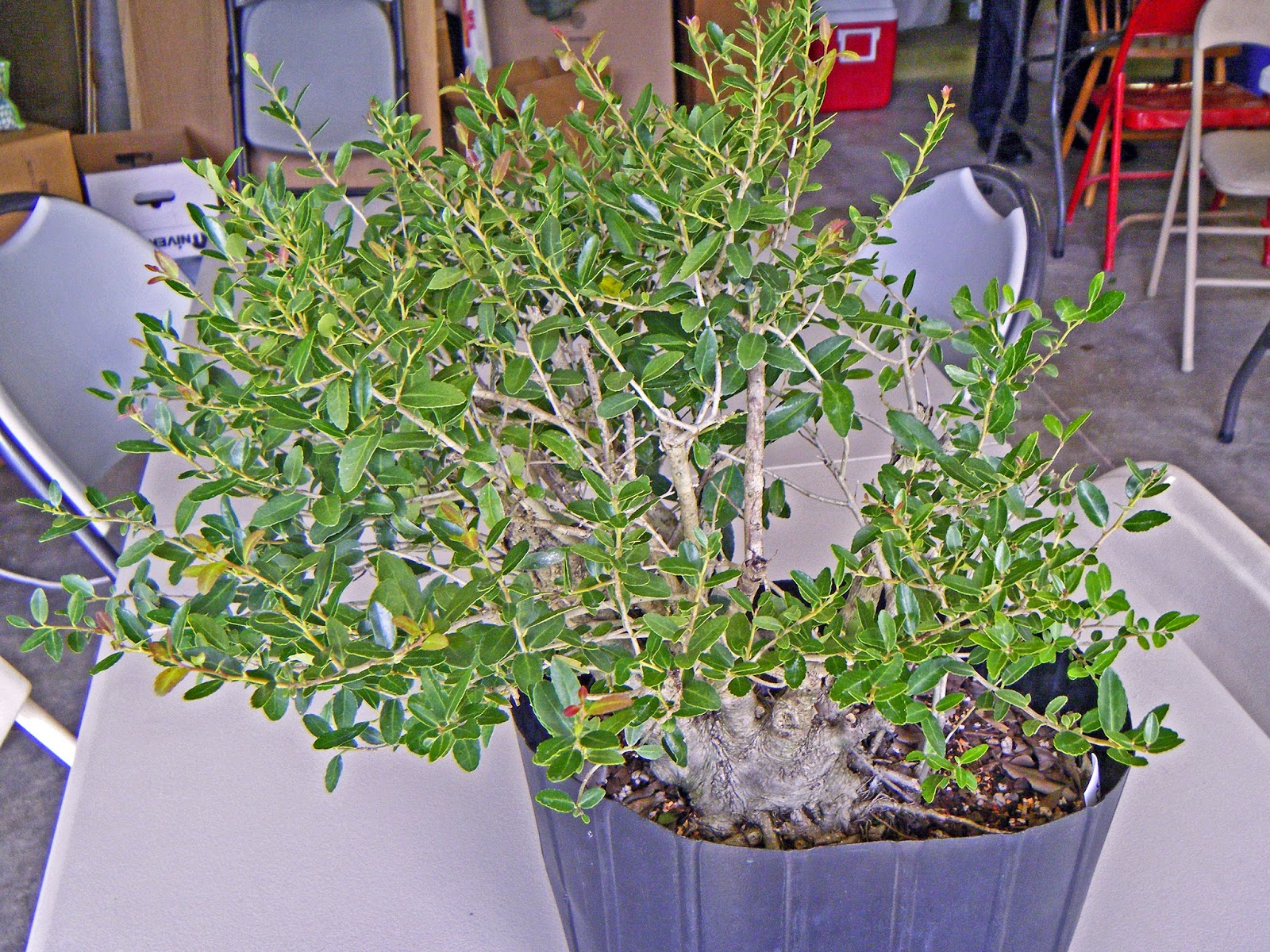I was one of those who asked Adam to bring along some dwarf yaupon holly - Ilex vomitoria 'Schilling's Dwarf.' Here's the one I chose.
 |
| This will make a nice multi-trunk clump if I can do it justice. |
 |
| Closeup of the base. |
When asked, Adam was happy to tell us a bit about Ilex vomitoria, and 'Schilling's Dwarf' specifically. Between what he said and what I learned from other sources, here are some facts.
- Yaupon holly is native to the southeastern United States, from central Florida north to the Carolinas and west to eastern Oklahoma and Texas. It is rated cold-hardy, in the ground, to USDA Zone 7, which means temperatures down to 0° F (-17.8° C) in a typical winter.
- The species grows up to 20 feet high (6 meters) in the wild, and is prone to form thickets. There are a number of named cultivars, each with its own points of appeal.
- The species adapts to a wide range of conditions, but does best in well-drained sandy soils that are moist to wet, and full sun. Optimum soil pH is 4.5 to 7. It is sufficiently salt tolerant to do well in coastal areas.
- Ilex vomitoria is the only native North American plant that contains caffeine. Various Native American peoples used a tea made from the leaves, socially and in certain ceremonies. It was long thought that the tea induces vomiting; thus the plant's species name vomitoria. But this has now been disproved. The berries, produced by female plants, provide food for many kinds of wildlife but are reported to be mildly toxic to humans.
- 'Schilling's Dwarf" is a male variety - like many hollies, yaupon is dioecious - that is slow-growing and popular for low hedges in the southeastern USA. In fact, Adam told us, the trees we were working on had come into his possession when a local church replaced one of its hedges!
My tree was a clump-style just waiting to happen, and the primary trunk has an uro that I want to develop into a feature. I chose to do most of the work myself, with Adam providing advice and pointers - for example, that yaupon wood is brittle, but partly-broken twigs usually heal well. It took me a little while to start to realize how brittle, and I'm relieved that several thicker twigs can be expected to heal over the next year or two! Clip-and-grow seems to be the logical choice as the primary shaping method for this species.
 |
| Styling finished for this year. The yellow arrow points to the uro I want to feature. |
My tree presently has seven trunks (count 'em), with a nice variation in the trunks' girths. Adam and I had a difference of opinion about the best front. My choice makes it easier to appreciate the uro, but leaves two of the lesser trunks almost invisible to the viewer; Adam advised me to rotate the tree a few degrees, so that all the trunks can be seen. I accepted his advice for the present, and over the next couple of years I'll decide which front I finally prefer.
 |
| The blue arrows point to the auxiliary trunks that may be removed in the future. |
This tree will be a shohin; partly because I'm happy with the size as it is, and partly because it will need to overwinter in our mudroom. Ilex 'Schilling' (as Adam usually refers to it) is only half-hardy here in northern Indiana. At present it is on our deck for as much sun as I can give it.
 |
| Mulched with sphagnum, and with a couple of rape-seed cakes. |
Almost four weeks after the workshop, the tree is flushing out very satisfactorily. Let me leave you with a picture of the new growth.
 |
| Eye-pleasing colors on the new leaves! ☺ |
:-) :-) :-)
No comments:
Post a Comment